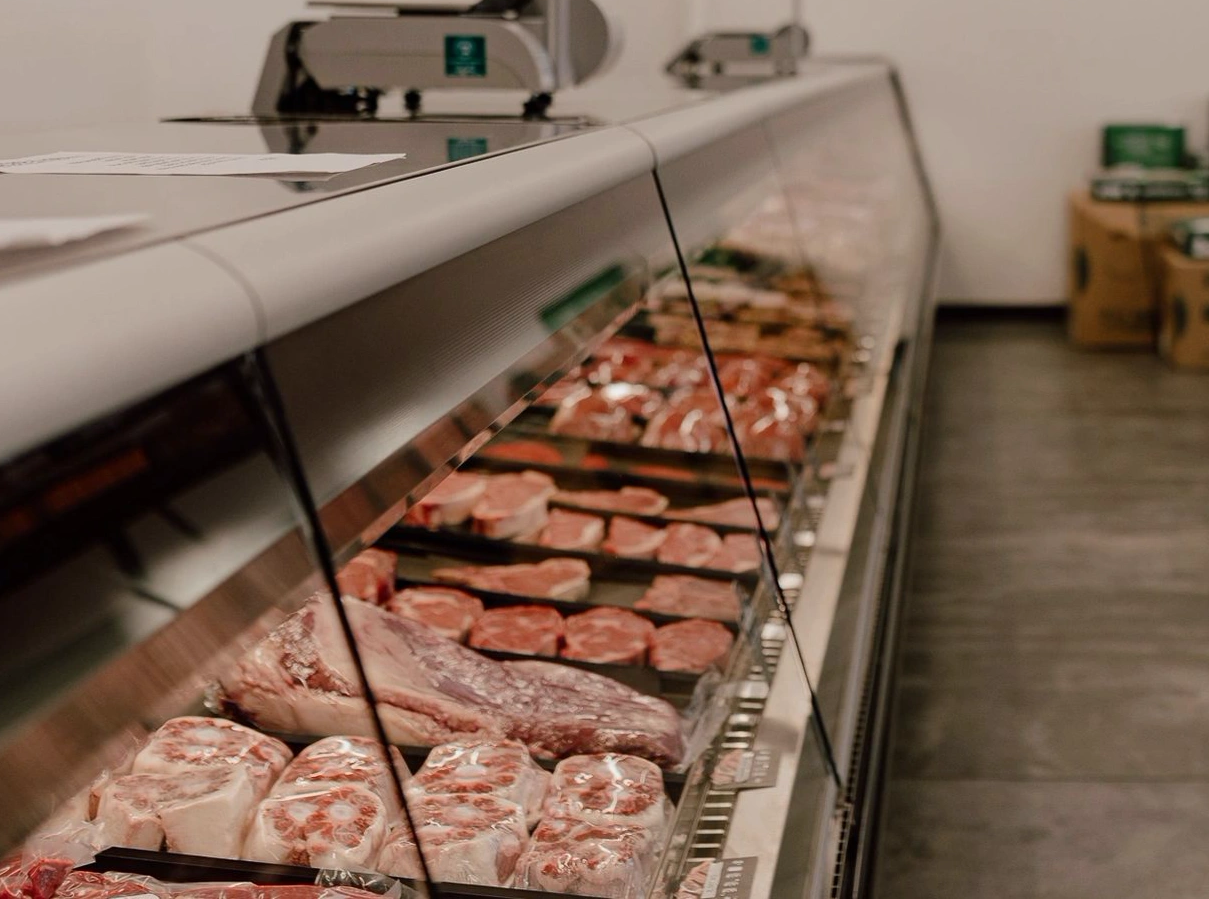Why Bagley Farms Meat Market Edwardsville IL Is the most effective Selection for Quality Meats
Reveal the Art of the Butcher's Cut in a Modern Meat Market
In the ever-evolving landscape of modern meat markets, the butcher's cut has actually transcended its typical roots, merging old-time workmanship with modern practices. What absolutely sets the contemporary butcher apart is their capacity to create a much deeper connection in between consumers and the origins of their meat.
Advancement of Butchery Strategies
The development of butchery methods reflects a rich tapestry of innovation and adaptation driven by developments in modern technology, modifications in customer demand, and a much deeper understanding of meat scientific research. Historically, butchery was a craft passed down through generations, with techniques sharpened over centuries to maximize return and taste. The commercial change ushered in automation, transforming traditional methods and making it possible for massive processing.
The mid-20th century saw butchery techniques additionally improved by clinical insights right into muscular tissue biology and meat aging, boosting both tenderness and taste. Developments like vacuum cleaner product packaging and refrigeration prolonged item shelf-life, enabling butchers to branch out offerings and improve high quality control. This duration additionally noted the surge of specific equipment, such as band saws and meat slicers, which enhanced precision and efficiency in meat handling.

The 21st century has actually presented digital modern technology right into the butchery world. Computerized systems currently assist in tracking animal provenance and enhancing cuts to satisfy certain customer choices. Additionally, a rebirth in artisanal butchery has actually emerged, blending standard abilities with modern-day knowledge to accommodate customers seeking ethical and sustainable meat options. This evolution highlights a dynamic interplay between tradition and technology, conference contemporary needs while protecting the craft's heritage.
Comprehending Meat Cuts
Comprehending the intricacies of meat cuts is necessary for both butchers and customers looking for top quality and value. For butchers, specific cuts show skill and regard for the craft, making sure marginal waste and optimal return.

Recognizing muscular tissue composition is important; muscles used more frequently by the animal tend to be tougher and are best matched for slow-moving food preparation techniques, while less-used muscles, like those discovered in the loin, are more tender and suitable for barbecuing or roasting. Familiarity with these distinctions empowers consumers to make educated selections, enhancing their cooking undertakings.
Picking Top Quality Meat
Picking the best meat entails more than just choosing a visually attractive piece from the screen. bagley farms meat market edwardsville il. The art of picking high quality meat needs a discerning eye and understanding of details qualities that symbolize quality and excellence. Pay interest to the shade; beef ought to have a brilliant, cherry-red tone, while lamb should display a soft pink tone, and pork a light pink. This indicates the meat is fresh and hasn't been revealed to oxygen for as well long.
Second of all, consider the marbling, which refers to the white flecks of fat within the muscle. Correct marbling is a crucial indicator of inflammation and taste, as it melts during food preparation, improving the meat's juiciness. Bear in mind, greater marbling frequently associates with superior top quality cuts, such as USDA Prime.
Texture is an additional essential element; meat must really feel solid to the touch, not slimed or extremely soft. Additionally, bear in mind the scent. Fresh meat should have a tidy, neutral smell, complimentary from any sour or repulsive smells.
Coupling Cuts With Food Preparation Methods

Conversely, tougher cuts like brisket and chuck roast are abundant in collagen, which breaks down into jelly when cooked gradually. These cuts Continue are ideal for braising or slow-moving roasting, allowing the meat to tenderize in time and establish deep, intricate tastes. Similarly, cuts such as brief ribs and pork shoulder prosper with slow-cooking methods, where prolonged cooking times change their robust structures right into succulent meals.
Lamb shanks and oxtail, which call for long term food preparation to soften, are best prospects for stewing or slow-moving simmering. These methods coax out rich, passionate flavors while maintaining moisture. By understanding the special characteristics of each cut, chefs and home chefs alike can boost their cooking productions, making certain each meal is both pleasing and memorable.
The Butcher's Function Today
Browsing the progressing landscape of the modern meat market, the butcher's function today extends beyond simple preparation of cuts. Contemporary butchers are culinary artisans, instructors, and advocates for lasting methods. They link the gap between the farm and the fork by ensuring ethical sourcing, comprehending pet husbandry, and focusing on openness in the supply chain. This change shows the expanding customer demand for quality over amount, where provenance and animal well-being are extremely important.
Along with crafting exact cuts, butchers now engage directly with consumers, providing cooking recommendations and customizing selections to fit private demands and preferences. Their competence in meat aging, marbling, and taste profiles empowers consumers to make educated choices, boosting their cooking experiences. This customized solution exhibits the butcher's advancing function as a relied on consultant in the cooking area.
In addition, butchers are essential in minimizing waste, using entire pets to produce diverse items such as sausages and stocks. This thorough method not just respects the animal however likewise lines up with contemporary sustainability goals. This way, go now the modern-day butcher symbolizes both custom and technology, adapting to an ever-changing market while preserving the creativity and stability of their craft.
Conclusion
Mastery in recognizing varied meat cuts and top quality signs empowers butchers to give informed suggestions, aligning particular cuts with optimum food preparation approaches. By honoring historical practices while accepting modern needs, the butcher's duty continues to be crucial in today's sophisticated meat market.